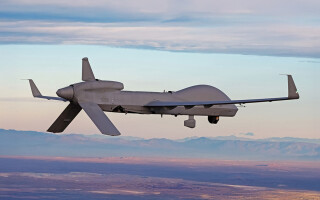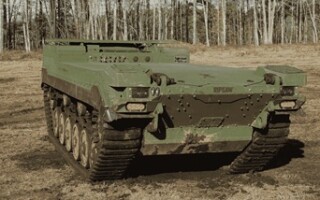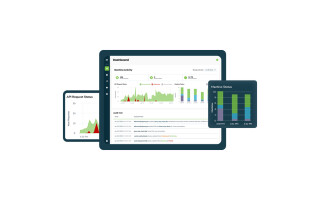Real-time digital twins with AI/ML: A new level of battlefield intelligence
StoryJune 11, 2025

Military decision-makers require timely, precise insights to address threats and manage logistics in complex, evolving missions. Digital twin technology – combined with generative artificial intelligence (AI) capabilities – is emerging as a transformative defense tool, providing military leaders, commanders, and mission planners with the enhanced situational awareness needed to make more informed decisions.
Defense operations involve thousands of interacting assets, including troop deployments, asset logistics, and adversarial threats, all of which evolve from minute to minute. Mission leaders require new approaches to process the growing volumes of real-time streaming data and make faster, better-informed decisions.
Traditional batch-processed analytics introduce delays that are incompatible with the high-tempo demands of modern combat operations. A software technology called real-time digital twins addresses this challenge by continuously tracking and analyzing real-time information about individual assets, predicting changes, and alerting commanders. This technology enables military teams to simultaneously monitor thousands of battlefield assets, reliably detect anomalies, and make more strategic decisions under pressure.
Real-time digital twins are software-defined, in-memory representations of battlefield assets that ingest continuous streams of live telemetry and sensor data. They process incoming messages in milliseconds using contextual information about each data source for deeper analysis and can apply predictive modeling from machine learning (ML) and generative artificial intelligence (AI) to detect subtle anomalies. Running on a scalable, in-memory computing platform, real-time digital twins combine and visualize data from multiple assets, providing commanders with enhanced situational awareness and faster insights into emerging issues.
Tactical advantage through predictive analytics
Real-time digital twins provide the ability to anticipate threats by analyzing historical movement patterns, terrain data, and live surveillance to predict hostile tactics. By ingesting and analyzing aerial drone and satellite surveillance, digital twins can track and visualize the movement of hostile military units, aircraft, and artillery assets on the battlefield, enabling commanders to make rapid, data-driven decisions based on evolving enemy actions.
This technology can also assist advancing military vehicles by detecting vulnerabilities, mapping alternative routes, and reducing operational risks to prevent ambushes or delays. Additionally, real-time digital twins support planning by identifying historical movement patterns and predicting potential future threats. Using these tools, military commanders can adjust convoy timing, reroute units, or mobilize reinforcements based on predictive insights, thereby improving survivability and enabling near-real-time adjustments to plans while under operational stress.
Enhancing continuous monitoring and visualization
Real-time digital twins can integrate generative AI (Gen AI) to provide enhanced continuous monitoring and anomaly detection, improving situational awareness for field commanders. By ingesting and assessing aggregated data from a population of digital twins, Gen AI can detect anomalies representing strategic threats and evaluate the histories of asset changes to identify subtle but critical developments.
Beyond detection, Gen AI accelerates decision-making by creating real-time data visualizations that highlight areas requiring immediate attention. Personnel can request these visualizations using natural language prompts, reducing dependence on technical query techniques. Gen AI can also proactively suggest and generate visualizations as it processes battlefield dynamics, for example, to identify unexpected troop movements. Together, these capabilities enable military teams to analyze and respond to threats more efficiently.
Figure 1 illustrates how satellite imagery and AI-driven image analysis integrate with digital twin software to create a real-time operational view for commanders.

[Figure 1 ǀ Satellite imagery and AI-driven image analysis can integrate with digital twin software to create a real-time operational view for military commanders.]
Improving mission resilience
Maintaining mission readiness requires reliable, well-maintained equipment and uninterrupted supply chains. Digital twins shift defense logistics activities from reactive to predictive by continuously analyzing sensor data for early indicators of failure or degradation. This approach enables military teams to assess equipment conditions in real time, identify wear-and-tear patterns, and proactively replace components or dispatch maintenance crews before failures occur.
Rather than waiting for breakdowns, digital twins leverage ML models to predict equipment failures, reducing costly downtime and maintaining operational readiness. For instance, the U.S. Navy has adopted digital twin technology to improve diagnostics and minimize mission delays associated with unplanned maintenance.
Real-time digital twins can also analyze battlefield supply chains, identifying disruptions before they escalate into critical issues. They can track ammunition levels for individual artillery pieces and initiate resupply operations in real time. By using digital twin technology combined with Gen AI-driven visualization tools, commanders can maintain a clear operational picture and act swiftly to sustain readiness.
Boosting defenses and situational planning with ML
Machine learning enhances digital twins by continuously analyzing incoming telemetry, detecting subtle patterns, and improving prediction accuracy through automated retraining. While currently used to predict equipment failures, these capabilities can extend to analyzing enemy asset movements, supporting proactive defense strategies.
By training on historical battlefield conditions, ML algorithms embedded within digital twins could predict unexpected enemy troop maneuvers, giving commanders advance warning of evolving threats. As live data streams in, digital twins can automatically retrain these ML algorithms, refining their predictions and ensuring defense strategies remain responsive to real-time developments. This continuous learning process strengthens military agility and resilience in dynamic operational environments.
Figure 2 illustrates how AI-driven image analysis and digital twin software with embedded ML work together to deliver continuous asset tracking and real-time visualization for commanders.

[Figure 2 ǀ A diagram illustrates real-time monitoring with digital twin technology.]
Better intelligence empowers commanders
Real-time digital twins integrated with AI and ML deliver real-time visibility and predictive intelligence. By continuously updating and analyzing live battlefield data, these systems empower commanders to detect threats faster, act with greater precision, and improve mission resilience.
As adversaries become increasingly agile and conflicts grow more data-driven, real-time digital twins will be central to enabling superior battlefield intelligence, enhanced readiness, and mission success.
Dr. William Bain is founder and CEO of ScaleOut Software, which has been developing software products since 2003 designed to enhance operational intelligence within live systems using scalable, in-memory computing technology. Bill earned a Ph.D. in electrical engineering from Rice University. Over a 47-year career focused on parallel computing, he has contributed to advancements at Bell Labs Research, Intel, and Microsoft. He also holds several patents in computer architecture and distributed computing. Bill founded and ran three companies prior to ScaleOut Software: The most recent, Valence Research, developed web load-balancing software and was acquired by Microsoft Corporation to enhance the Windows Server operating system.
ScaleOut Software https://www.scaleoutsoftware.com/






